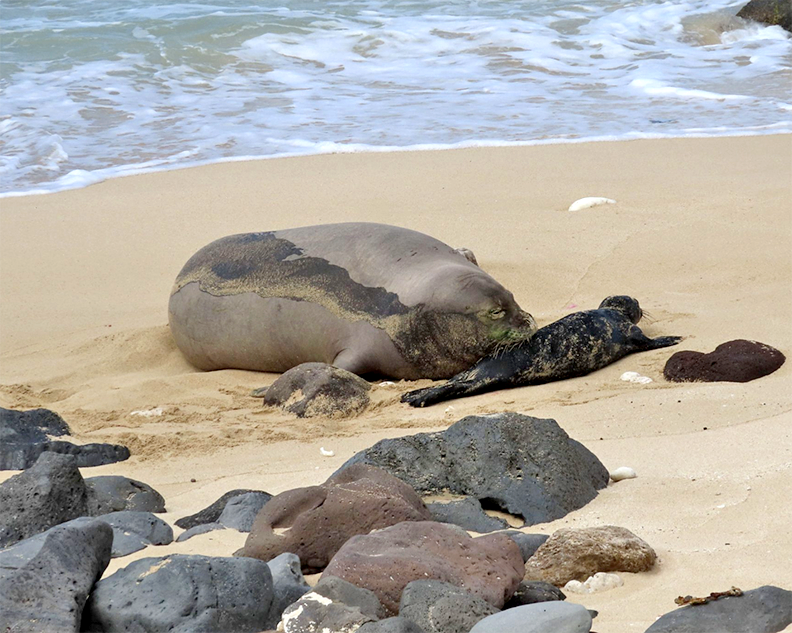By Jan TenBruggencate
The Kaua`i Marathon is this month, but human events are hardly the most arduous endurance events around the islands.
The most remarkable ultra-athletes are in the animal world.
The world’s largest population of Newell’s shearwaters breeds on Kaua`i. Chicks hatch in summer and fledge in fall each year, flying down from their mountain burrow colonies out to sea.
And they may stay at sea for two to six years before returning to land to breed. That’s a long time to be adrift on the winds and waves.
Hawaiian green sea turtles have a similar pattern. When they hatch, cute little turtles not much bigger than a silver dollar, head out to sea if they manage to avoid predatory birds and fish.
And they stay at sea for a long, long time. They don’t come back to shore until they’re the size of a dinner plate. Where are the little turtles swimming for the years after their hatching? That’s not real clear.
Hawaiian monk seals can easily make the swim between the main Hawaiian Islands and between the main and the Northwestern Hawaiian Islands.
And although some tend to stay at the island of their birth, many seals will also occasionally go traveling. Hawaiian seals have been reported at Johnston Island, 700 miles or so to the south. That’s a long swim over very deep water for an animal that commonly feeds on the deep reefs fairly near the islands.
Laysan albatrosses amazed everyone when satellite tags proved their endurance mettle. They can make flights of several thousand miles every couple of weeks, tallying as much as 50,000 miles in a year.
Laysan albatross from Midway Atoll have been found to feed as far east as San Francisco Bay, and to range across the North Pacific up to Alaska—then to return to their nests on Midway.
Still, an albatross is a seabird. It can set down on the water and take a break. The same is not true of a favorite winter lawn bird of many Hawaiian residents, the Pacific golden plover.
The Island birds nest in the tundra at the end of the Alaskan archipelago. They winter in Pacific islands, including Hawai`i.
Many residents have favorite individual Pacific golden plovers. Is last year’s plover the same one that landed on the lawn this spring? They’ll sometimes come back to the same patch of Hawaiian lawn, year after year. For many years, there was a one-legged plover that would return faithfully to the Kanaloahuluhulu Meadow in Koke`e State Park.
An argument in favor of plovers as champion endurance athletes: They are not seabirds, and don’t land on the water. So their 2,400 to 3,000-mile flight between Alaska and Hawai`i is non-stop.
The birds have been equipped with geolocating equipment. The average Hawai`i bird seems to take about three days flying north and four days flying south. They average 35 to 40 miles an hour over the water, flying day and night.
Discover more from ForKauaiOnline
Subscribe to get the latest posts sent to your email.





Leave a Reply